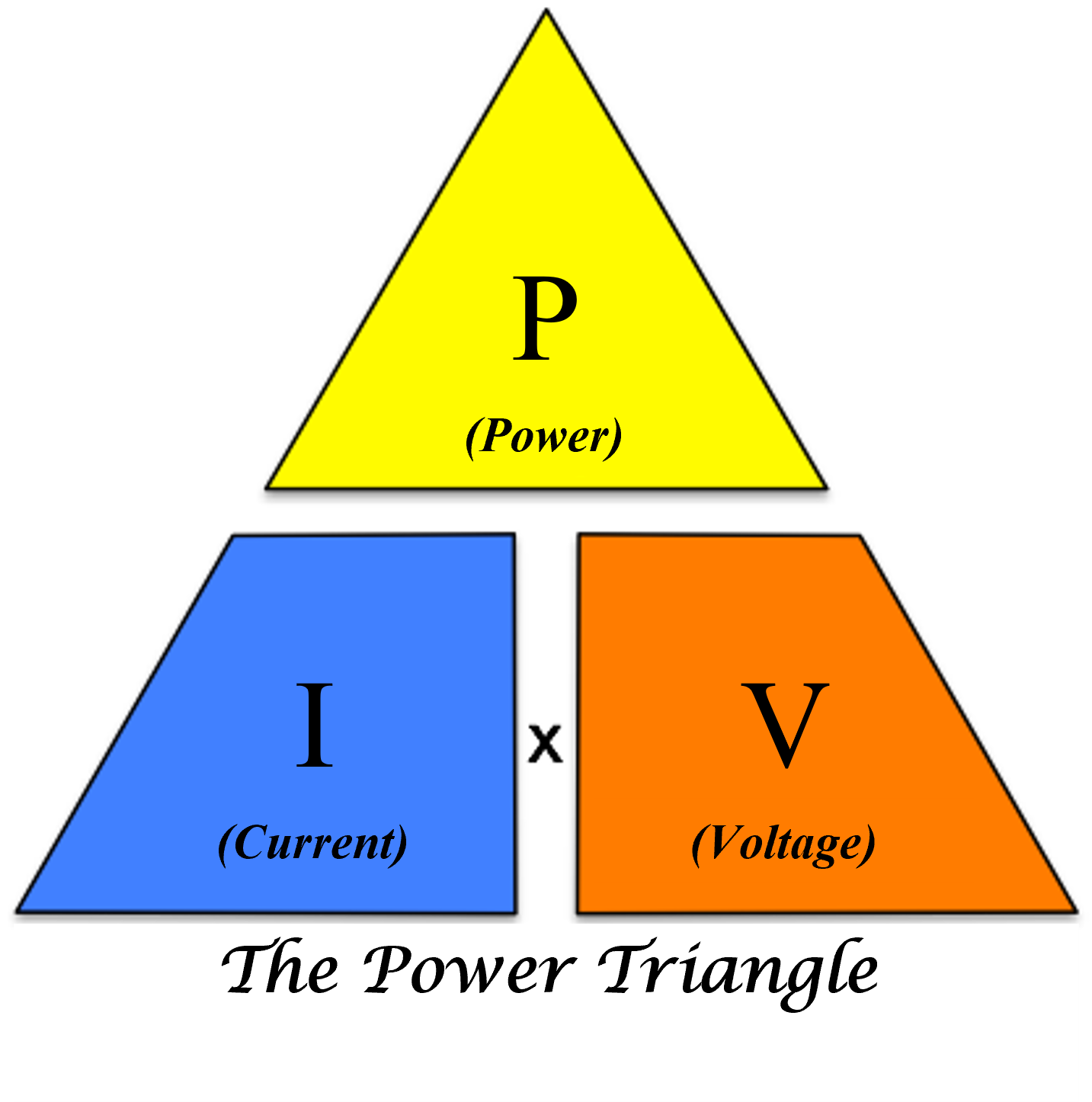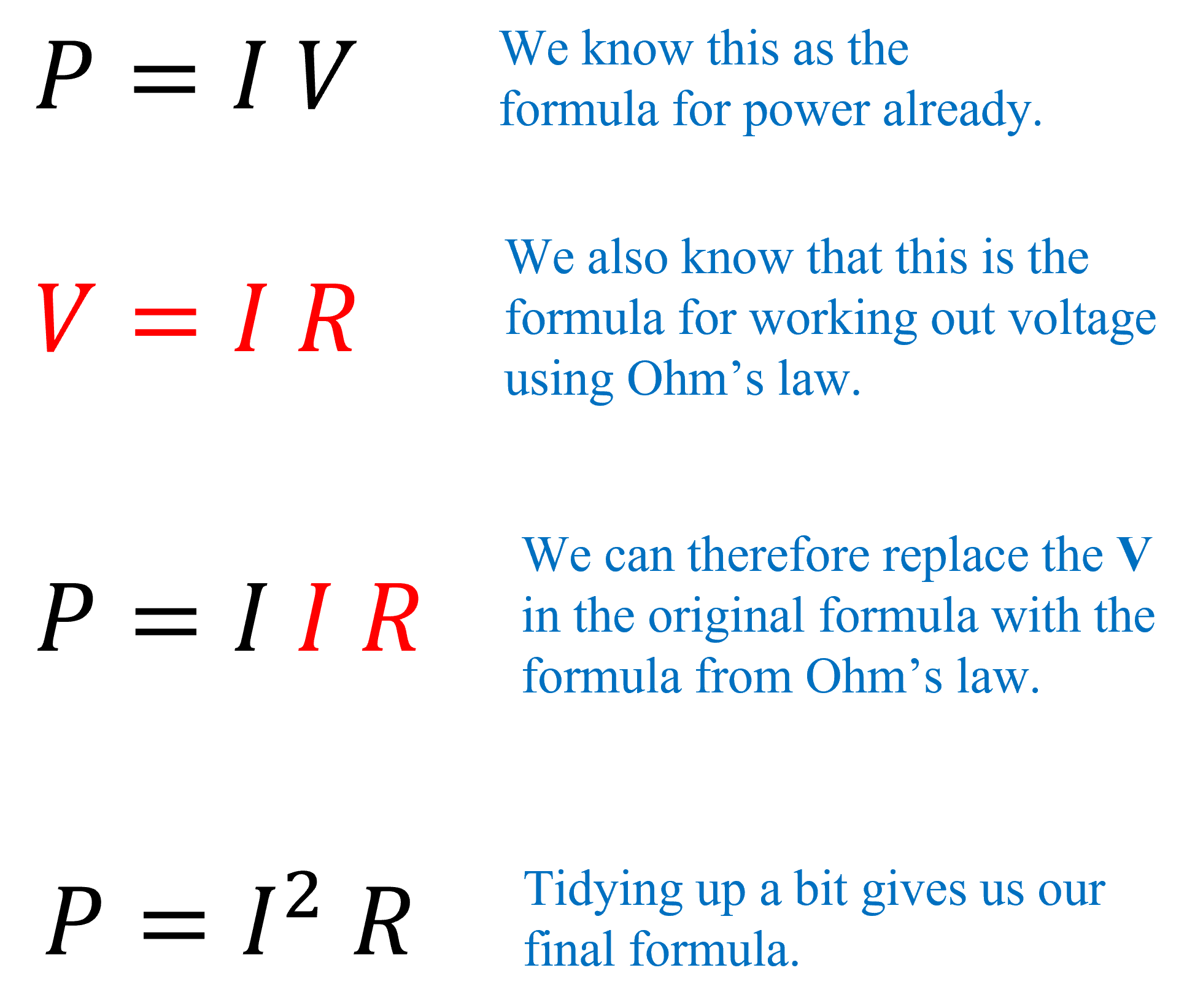Power is the measure of how quickly energy is transferred.
Often electrical energy is transferred into other forms such as heat, light and magnetism.
An electrical appliance such as a kettle converts electrical energy into heat energy and it does so at a rate dependent on its power. A standard kettle might have a power rating of 2000 Watts (2 kW) and will bring the water to the boil within a certain period of time. A kettle with a power rating of 1000 Watts (1 kW) would take twich as long however.
The basic formula for calculating power is:

Where:
P is the power in Watts (W)
I is the current in Amperes (A)
V is the voltage in Volts (V)

The power triangle is a way of remembering the power formula and how to transpose it to find an unknown quantity.
If you want to make P the subject, cover up the P and the result is P = I x V.
If you want to make I the subject cover up the I and the result is I = P/V.
If you want to make V the subject cover up the V and the result is V = P / I


There are two other formulae we can use to calculate power. These two formula are derived from P=IV and Ohm's law. I've shown how these two formulae are derived just so you can see where they come from.

Where this comes from:


Where this comes from:

